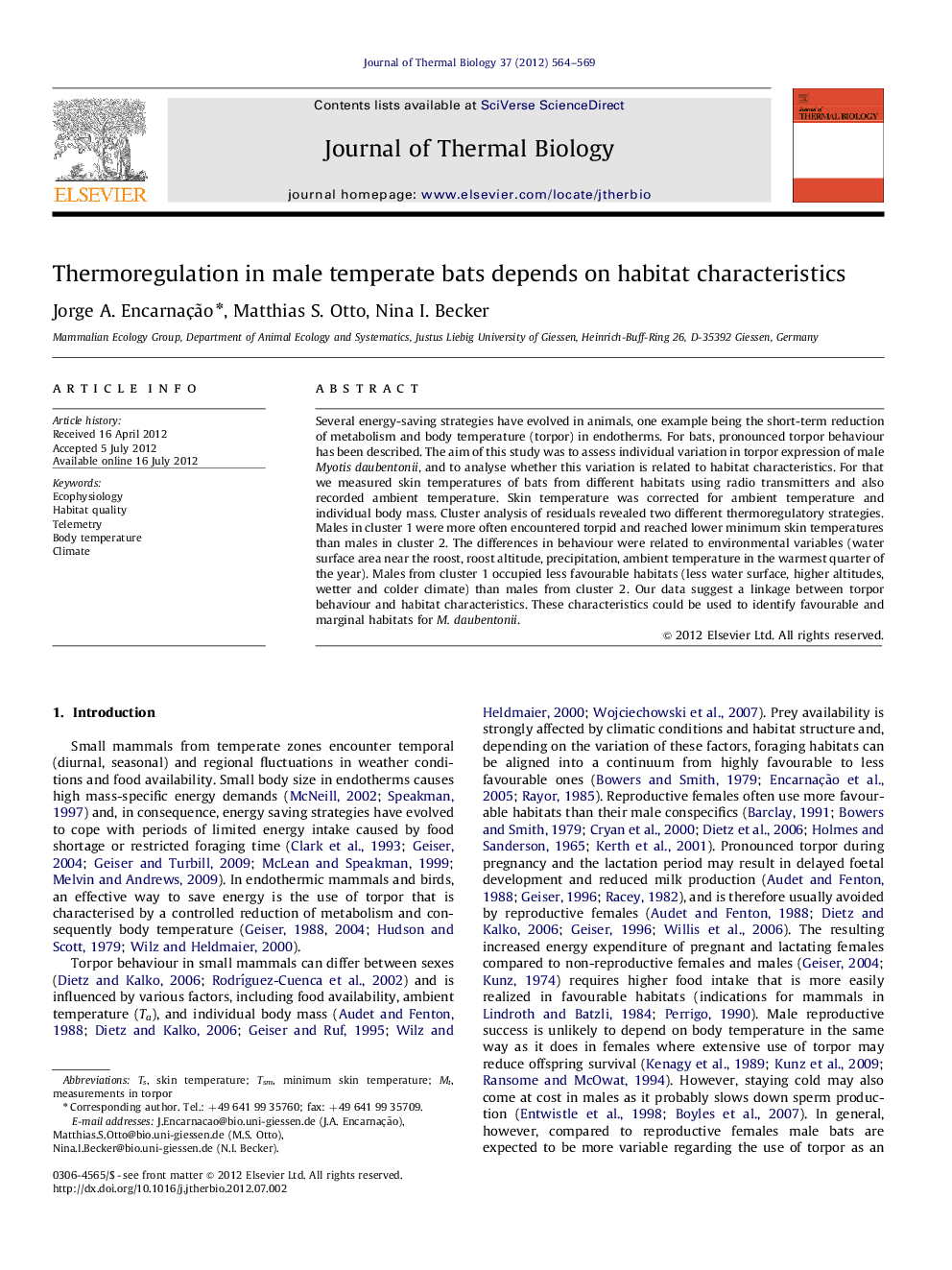| Article ID | Journal | Published Year | Pages | File Type |
|---|---|---|---|---|
| 2843110 | Journal of Thermal Biology | 2012 | 6 Pages |
Several energy-saving strategies have evolved in animals, one example being the short-term reduction of metabolism and body temperature (torpor) in endotherms. For bats, pronounced torpor behaviour has been described. The aim of this study was to assess individual variation in torpor expression of male Myotis daubentonii, and to analyse whether this variation is related to habitat characteristics. For that we measured skin temperatures of bats from different habitats using radio transmitters and also recorded ambient temperature. Skin temperature was corrected for ambient temperature and individual body mass. Cluster analysis of residuals revealed two different thermoregulatory strategies. Males in cluster 1 were more often encountered torpid and reached lower minimum skin temperatures than males in cluster 2. The differences in behaviour were related to environmental variables (water surface area near the roost, roost altitude, precipitation, ambient temperature in the warmest quarter of the year). Males from cluster 1 occupied less favourable habitats (less water surface, higher altitudes, wetter and colder climate) than males from cluster 2. Our data suggest a linkage between torpor behaviour and habitat characteristics. These characteristics could be used to identify favourable and marginal habitats for M. daubentonii.
► Analysis of torpor use of free-ranging male bats. ► No a priori categorisation but cluster analysis reveals natural groups. ► Combination of thermoregulatory behaviour and habitat characteristics using GIS analysis. ► Large sample size that allows for reliable statistics.
